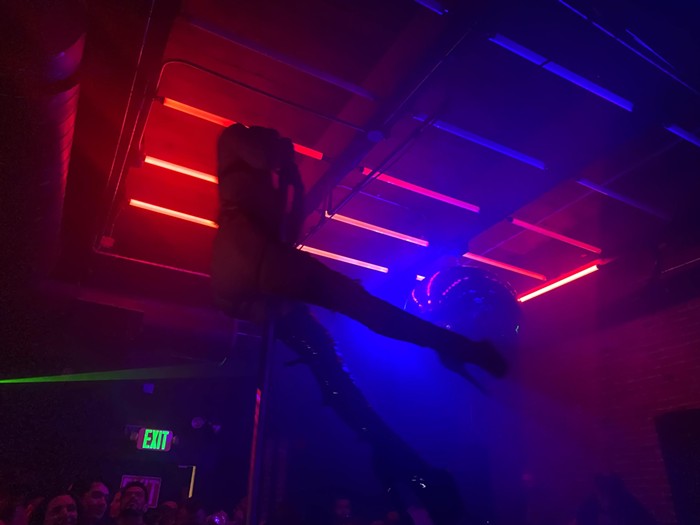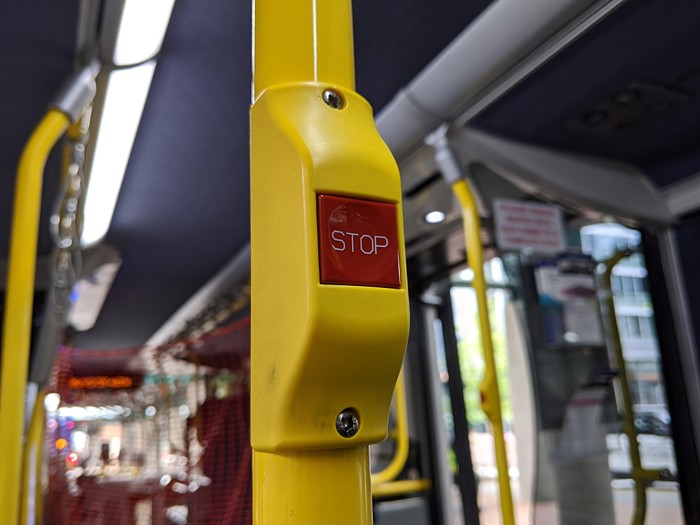Will their dreams be realized? The budget writers at the Seattle Monorail Project (SMP) say they can build everything the neighborhoods want and more for the astonishing average price of just $6 million a station, or a total of $115 million. But the experience of other cities shows that kind of money buys functionality, not aesthetics. Most elevated transit (usually light rail) stations, in fact, are fairly skeletal affairs: a platform, rudimentary rain shelters, and escalators or elevators to carry riders to and from the station. In Dallas, according to Dallas Area Rapid Transit spokesperson Morgan Lyons, DART's elevated light rail stations are "totally open" to the elements, and feature little more than benches, metal canopies, elevators, and basic lighting and signs. The total cost for those stations, according to Lyons: between $4.2 and $5.4 million.
Here in Seattle, Sound Transit's more elaborate light rail stations provide a cautionary example of what extras like glass enclosures and bike storage really cost. Sound Transit's two elevated stations--one just south of McClellan Street in the Rainier Valley and another at South 154th Street--are estimated at $14-$16 million and $15.5-$17.5 million, respectively, according to ST spokesperson Geoff Patrick. Both are fully enclosed and "look like buildings," Patrick says--just the sort of structures monorail planners hope to build. But even at that price, neither station includes the kind of fancy architectural details--skybridges, revolving restaurants, waterfalls--neighbors of the planned monorail say they want. "There is nothing fancy about the [McClellan] station, believe me," says Jim Waymire, whose firm, Otak Inc., helped design the station. "The materials were not selected to dazzle anybody with opulence.... They're real rough-and-ready, durable materials." Dennis Haskell, an architect who used to head up the city's design commission, predicts that $6 million will likely allow "a bare-bones kind of approach--you can't put a lot of decoration on it."
Paul Bergman, spokesperson for the SMP, insists the agency will "only build with what the voters gave us to use"--if the plans go over the allotted $6 million average, the SMP will just have to trim its proposals. That could mean limited public artwork, no glittering glass enclosures, or less costly materials--concrete and steel, for example, instead of graffiti-resistant glass and Roman brick. The agency, in its previous incarnation as the Elevated Transportation Company, has already acknowledged as much; in a June 2002 document known as a "feasibility cost plan," which had a slightly lower per-station estimate, consultant Steve Kelly described monorail stations as "variations on a functional theme; constructed with the same basic 'kit of parts.' They are not seen as highly individualized or decorative."
Why the discrepancy between what monorail planners have promised and what their own experts say they can deliver? Joel Horn, the monorail agency's executive director, says planners are just trying to see what the neighborhoods want before explaining the tradeoffs. "We're trying to trade off being a great steward of public funds and great public design," Horn says. "I can't tell you today which of the [public's] ideas are going to be affordable and which are not."
Basic station elements can add up quickly. Numerous factors--the number of escalators and elevators, whether a station is regular size or a larger "superstation," and whether it includes a mezzanine (which can add $1 million or more to a station's cost)--can inflate station budgets. And that's before extras like skybridges, planned for at least one and perhaps several stations, are factored in; the seismically reinforced skybridge at the convention center above Pike Street, according to one source at the convention center, cost roughly $300 a square foot, or $3.6 million. And "obviously," Waymire says, "the structural costs of creating a station above-grade are significantly greater than at-grade"--particularly in an earthquake-prone city like Seattle.
Who will break these realities to the public, which seems to think monorail stations will be the embodiment of grand, bank-breaking civic architecture? Rick Sundberg, the only architect on the SMP board, says that because "most people are in no position to think about or evaluate architecture," they don't have a clear concept of what a realistic station will actually look like. "But I think they will soon," he says.


















